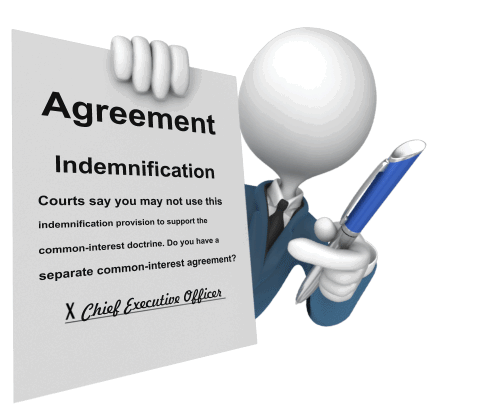In a matter of first impression, a North Carolina appellate court ruled that an Asset Purchase Agreement’s indemnification provision did not create a “tripartite attorney–client relationship”  among the contracting parties and counsel sufficient to invoke the common-interest doctrine and protect attorney communications from disclosure. Friday Investments, LLC v. Bally Total Fitness of the Mid-Atlantic, Inc., 2016 WL 3156239 (N.C. Ct. App. June 7, 2016). You may read the decision here.
among the contracting parties and counsel sufficient to invoke the common-interest doctrine and protect attorney communications from disclosure. Friday Investments, LLC v. Bally Total Fitness of the Mid-Atlantic, Inc., 2016 WL 3156239 (N.C. Ct. App. June 7, 2016). You may read the decision here.
Background
Bally leased space for its health club operations, but later sold the health club and assigned the lease to Blast Fitness Group. The Asset Purchase Agreement between Bally and Blast contained an indemnification provision.
The lessor later sued Bally (but not Blast) for unpaid rent, and Blast agreed to defend Bally pursuant to the Asset Purchase Agreement. When the lessor requested post-suit correspondence between Bally and Blast, Bally sought a protective order claiming that the attorney–client privilege protected the correspondence from disclosure.
Tripartite Relationship
Bally claimed that the privilege covered the communications because Bally, Blast, and its lawyers held a “tripartite attorney–client relationship” sufficient to invoke the attorney–client privilege under the common–interest doctrine. A tripartite relationship most commonly exists when an insurance company retains counsel to represent an insured.
The appellate court noted, however, that “the linchpin in any analysis of a tripartite relationship is the finding of a common legal interest between the attorney, client, and third party.” In other words, the contracting parties “must first share a common interest about a legal matter.”
Ruling
The court rejected Bally’s theory that the common–interest doctrine protected communications between it, Blast, and counsel. Bally and Blast’s failure to enter a common–interest agreement was not fatal, but the court noted that “prudent counsel would always put a representation agreement in writing.”
The fatal blow was Bally’s inability to show that it had a common legal—rather than business—interest with Blast. Bally analogized its indemnification provision with Blast to an indemnification agreement between and insurer and insured, but the court found “the analogy unpersuasive.”
Here, Blast was not a party to the litigation and had no contractual authority to settle or affect the litigation’s outcome. The indemnification provision was ancillary to Bally’s sale of its business, rather than for a common legal purpose of defending specific litigation.
In short, Bally and Blast “shared a common business interest as opposed to the common legal interest necessary to support a tripartite attorney–client relationship.”
POP Analysis
On the surface, one would think that a contractual indemnification provision pertaining to third-party claims necessarily invokes a common legal interest. But with Blast not a party to the lawsuit, the court looked for something more to prove a common legal interest.
Friday Investments instructs that parties to an Asset Purchase Agreement should not rely on a boilerplate indemnification provision to create the common legal interest. Here, it appears the parties could have protected their communications by entering into a joint–client relationship with single attorney or a common–interest agreement specifically identifying the litigation and the common legal interest.

1 Comment
Comments are closed.